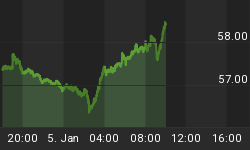Every good idea starts with humble beginnings, and this one is no different. Starting with a joke in the Facebook group Tesla Owners Worldwide, members discussed mining bitcoin using the free power provided by Tesla’s charging stations to tackle the cryptocurrency’s enormous energy costs. And one member actually did it, posting a photo for proof.

Via Ecomonitoringnews.com
The group discussion eventually raised the moral question: is it OK to use the free power for anything other than charging the Tesla? Well, that’s not for me to decide.
It does, however, prompt a few interesting ideas regarding both the future of crypto-mining in your trunk and the future power consumption of electric vehicles.
Electric Vehicles
Electric vehicles (EVs) are quickly becoming full service entertainment centers on wheels, and when self-driving cars have their breakthrough moment, it would not be far-fetched to suggest that using your Tesla to mine bitcoin could become negligible compared to the amount of energy being used by GPU heavy and power hungry self-driving, climate controlled, movie theater… I mean supercar.
Though Elon Musk has pledged to disconnect the Supercharging stations from the grid –his statement was vague and there has been no timeline implemented. And in the meantime, many of these stations are essentially being powered by fossil fuels. In the classic “hope for the best, prepare for the worst” scenario, let’s assume for now that the commercial tech surpasses that of the infrastructure that supports it.
Electric vehicles, especially the luxurious Teslas, are already being fact-checked for environmental efficiency. Until these solar chargers are in place, smaller, more modest vehicles, powered by fossil fuels or electricity, remain significantly ahead of Tesla’s entire fleet in environmental friendliness.
So where does that leave these bitcoin mining Tesla owners? Well, electric cars have a pretty promising future. In time, it may even be possible to generate electricity while driving, which means that mining your favorite power-intensive cryptocurrency while you watch Netflix on your morning commute may not be outside of the realm of possibility.
Possible Solutions
Announced in 2016, the state of California is looking to cover its roads with piezoelectric crystals, a material that will turn vibrations into electricity. A report prepared for the California Energy Commission in 2014 stated: “If piezoelectric?based technology has the potential to match the performance, reliability and costs of existing or emerging renewable energy sources, then it can potentially diversify California’s resource portfolio and ultimately increase grid reliability and reduce costs to ratepayers.”
The inspiration for this undertaking is said to have stemmed from Israel’s 2009 project which covered a 10-meter strip of a widely used coastal freeway, Route 4, with the crystal while nearby batteries were used to store up to 2,000W/h of electricity generated by the crystals.
Mike Gatto, a Los Angeles assemblyman noted: “California is the car capital of the world and we recycle just about everything. So why not capture the energy from road vibrations and put it to good use?”
Scientists have estimated that a 10-mile strip of piezoelectric road could generate enough electricity to power entire cities, and if a vehicle can harness some of that power while driving, the possibilities are endless.
Another option for the cars of the future is solar paint, something that has already hit the market. Though organic photovoltaic solar cells are far less efficient than their silicon cousins, the German solar company Heliatek has been breaking records with its technology for years. And Heliatek believes this technology could change the face of the automotive industry.
Sono Motors is also looking to take electric vehicles to the next level. Its project, the Urban, seats 6 passengers and is able travel up to 155 miles on a single charge. The car is also covered in monocrystalline silicon solar cells, which will add up to 18 miles per day of range.
While these solutions alone won’t be enough to transform your Tesla into a rolling Bitmain mining operation, it is definitely a start. And with a mix of environmentally friendly charging stations, piezoelectric crystals and solar paint, I think we can forget about the moral ambiguity of mining bitcoin with Tesla’s free power.
By Michael Kern via Crypto Insider















